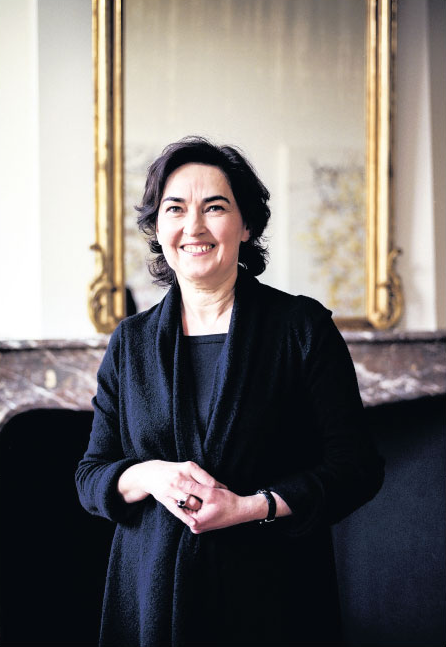People
artnet Asks: Marsha Plotnitsky of the Merchant House
The Amsterdam gallery is gearing up for the Unseen Photo Fair.

The Amsterdam gallery is gearing up for the Unseen Photo Fair.

Artnet Galleries Team

Since 2012, the Merchant House has served as an important cultural nexus within Amsterdam’s rich gallery scene. It focuses on unique and one-off curated projects, resulting in a constantly evolving programme that highlights emerging and established artists from Holland and beyond.
Here, Marsha Plotnitsky, the gallery’s artistic director, gives us a preview of the stellar work they’ll be bringing to the Unseen Amsterdam, the world’s leading platform for contemporary photography. The fair opens this Friday September 21 and runs through September 24, so mark your calendars.
Why did you choose to participate in Unseen?
Unseen is one of the venues in Amsterdam with goals that match the Merchant House’s aim to explore the city as a critical nexus and reconnect with the avant-garde themes that exemplify it.
How many artists are you bringing to the fair, and how did you select these artists?
We are presenting two young experimental artists, Sylvie Bonnot and Zhu Hong, in dialogue with photography. Bonnot’s new groundbreaking work within the medium itself will also feature at Unseen.
What type of art does your gallery focus on?
The Merchant House has pursued an “art space / gallery” strategy from the start. The program evolved as a masterworks series of projects, showcasing artists who have been strategically forging a most singular creative language. The projects query the essence of what constitutes an art object today and explore its art historical analytics.
How do you select the artists you represent? When does your personal taste play a role in your selection?
The ostensibly personal selection is motivated by the logic of the program. Up until now it has included thematic exhibitions for international and Dutch innovators, such as Henk Peeters, Jan Schoonhoven, André de Jong, Chuck Close, Carolee Schneemann, Hilarius Hofstede, Craigie Horsfield, Judit Reigl, and Pino Pinelli. Each exhibition is accompanied by related cultural and research events and catalogues as documentation.
What is the first artwork that captured your attention?
I can perhaps register two formative points. The Portrait of an Old Man in Red by Rembrandt at the Hermitage in St. Petersburg was a rather somber choice for a favorite painting at the age of 12. More natural was the discovery of Frank Stella, 10 years later, in a private collection in NYC; the intimate access to such radical contemporary works pointed to ways of personal involvement with art.
What is the best show you’ve seen recently?
The Stedelijk Museum in Amsterdam offers a rare view of its entire collection of Dubuffet. It’s a most extraordinary group of works of one artist in one museum, and an equally extraordinary example from its collector, the then-director of the Stedelijk, Edy de Wilde, of how to cultivate knowledge of the art of one’s time and to collect in-depth.
What is your next important show? Tell us why we should come.
How does a young artist insert him or herself into the history of an art medium? Our next exhibition cycle, Making Things Happen: Young Artists in Dialogue, broaches such issues in three collaborative exhibitions of six young French artists who share geography, art education, and attitude to their métier. The shows are organized as visual dialogues—both playful and serious—between individual works.
What advice can you give to a first-time collector?
Art collecting is a shared economic experience that allows one to question our social behavior and collective vision. I think it’s important to enjoy both the social dimensions offered everywhere—galleries, for example, don’t charge entrance fees—and private moments with art at home, if one can afford to buy. But one can also take the liberty to enjoy such private moments by looking at art in the galleries on a lunch or coffee break, say…
The artnet Gallery Network is a community of the world’s leading galleries offering artworks by today’s most collected artists. Learn more about becoming a member here, or explore our member galleries here.